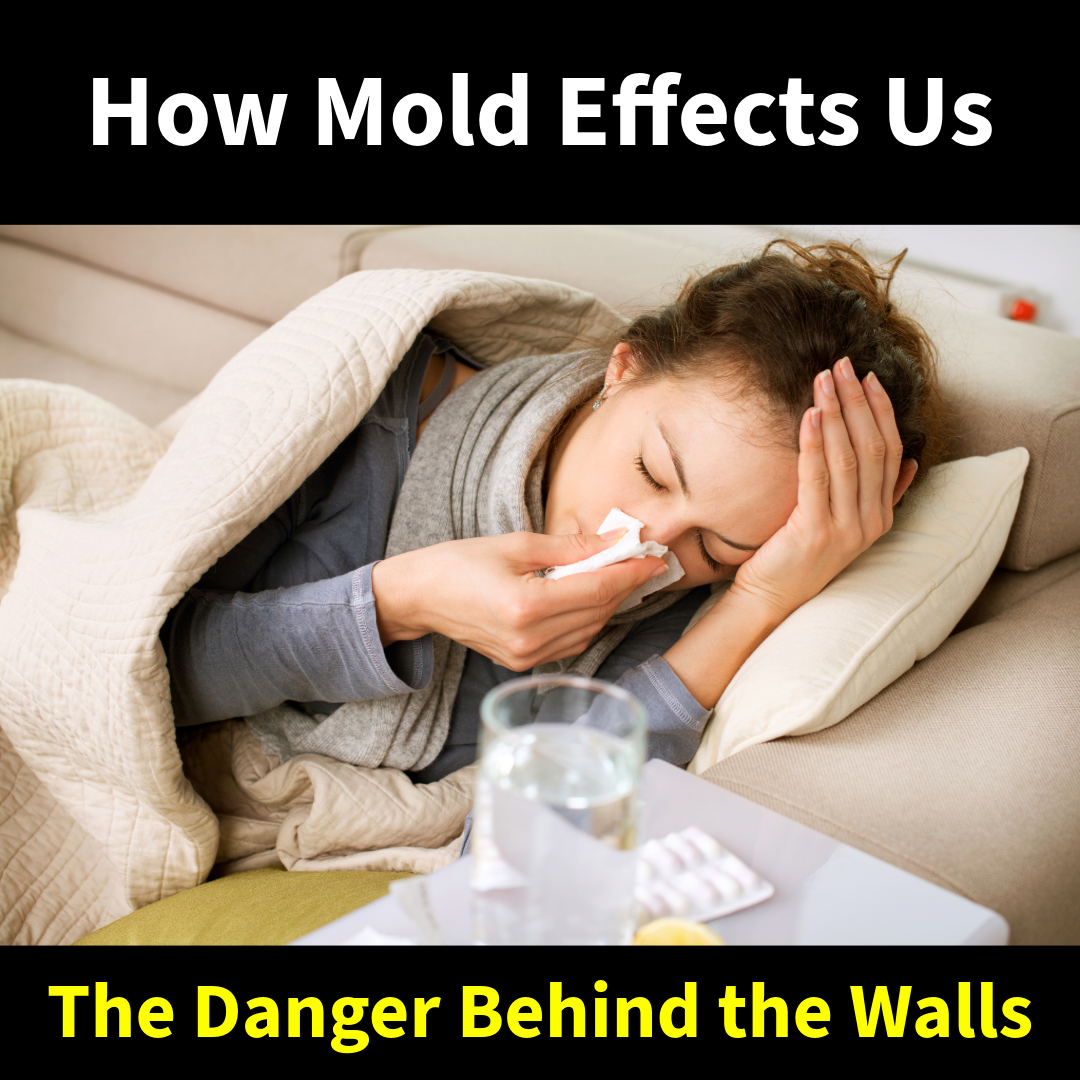After pollens, molds are the leading cause of outdoor airborne allergies, which can recur year-round. Some of the most common symptoms of those sensitive to molds include nasal stuffiness, eye irritation, wheezing, cold and flu-like symptoms, rashes, conjunctivitis, inability to concentrate, and fatigue. Mold exposure has also been associated with asthma onset. Symptoms usually disappear when the mold is removed. However, under certain conditions, exposure to mold can cause serious health problems. Some people with chronic illnesses, such as obstructive lung disease, for example, may develop mold infections in their lungs. Also, some people exposed to large amounts of mold at work, such as farmers working with moldy hay, may develop even more severe reactions, including fever and shortness of breath. Some molds are toxic, producing chemicals called “mycotoxins,” which in large doses may affect human health, usually by causing allergy-like symptoms such as watery eyes or eye irritation, runny nose and sneezing or nasal congestion, wheezing and difficulty breathing, aggravation of asthma, coughing, itching, or rashes.
Other health problems that have been linked to mold exposure involve the odors produced by mold “volatiles” during the degradation of substrates. These have been discovered to irritate mucous membranes, and they have been associated with a number of symptoms from headaches and nausea to fatigue in individuals exposed to them. For those suffering from multiple chemical sensitivities, the simple presence of these microbial volatile organic compounds (MVOCs) can trigger a reaction just as strong and serious as exposure to chemical VOCs. Fungi or microorganisms related to them may cause other health problems similar to allergy. Some kinds of Aspergillus especially may cause several different illnesses, including both infections and allergy. These fungi may lodge in the airways or a distant part of the lung and grow until they form a compact sphere known as a “fungus ball.” In people with lung damage or serious underlying illnesses, Aspergillus may grasp the opportunity to invade and actually infect the lungs or the whole body.
In some individuals, exposure to these fungi can also lead to asthma or to an illness known as “allergic bronchopulmonary aspergillosis.” This latter condition, which occurs occasionally in people with asthma, is characterized by wheezing, low-grade fever, and coughing up of brown-flecked masses or mucous plugs. Skin testing, blood tests, x-rays, and examination of the sputum for fungi can help establish the diagnosis. Corticosteroid drugs are usually effective in treating this reaction; immunotherapy (allergy shots) is not helpful. The occurrence of allergic aspergillosis suggests that other fungi might cause similar respiratory conditions. Inhalation of spores from fungus-like bacteria, called “actinomycetes,” and from mold can cause a lung disease called “hypersensitivity pneumonitis.” This condition is often associated with specific occupations. For example, farmer’s lung disease results from inhaling spores growing in moldy hay and grains in silos. Occasionally, “hypersensitivity pneumonitis” develops in people who live or work where an air conditioning or a humidifying unit that is contaminated with these spores emits them.
The symptoms of “hypersensitivity pneumonitis” may resemble those of a bacterial or viral infection such as the flu. Bouts of chills, fever, weakness, muscle pains, cough, and shortness of breath develop 4 to 8 hours after exposure to the offending organism. The symptoms gradually disappear when the source of exposure is removed and the area properly ventilated. If it is not removed, workers having to be in those contaminated areas must wear a protective mask with a filter capable of removing spores or change jobs. If “hypersensitivity pneumonitis” is allowed to progress, it can lead to serious heart and lung problems. Also, air with a high concentration of fungal spores of a number of different types of molds may contain toxins that, when breathed over a long period of time, may result in a kind of poisoning. Stachybotrys atra, a mold that is commonly found on wet cellulose products (for example, drywall) and is causing growing concern among physicians, is one of these molds. In one recent study, it was linked to lung bleeding in infants. This mold has also been linked to sudden infant death syndrome and to central nervous system symptoms such as personality changes, sleep disorders, and memory loss.

